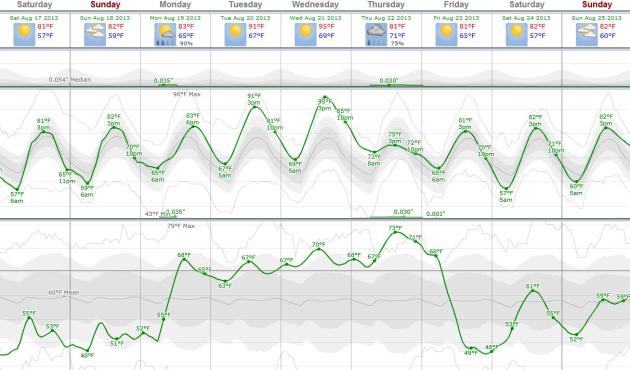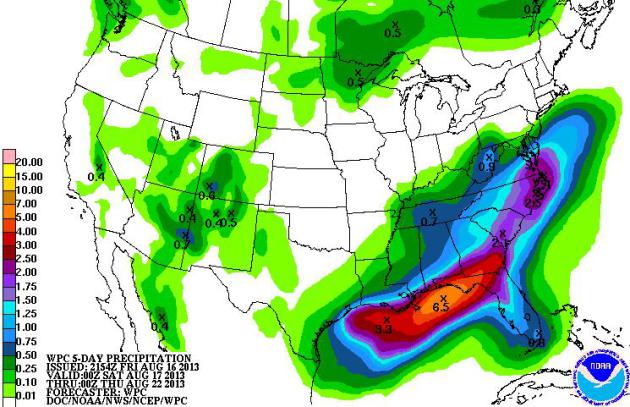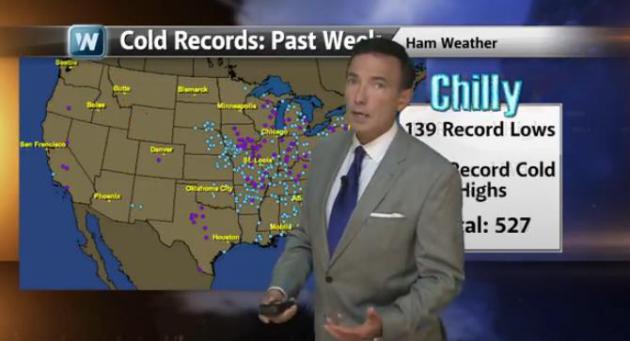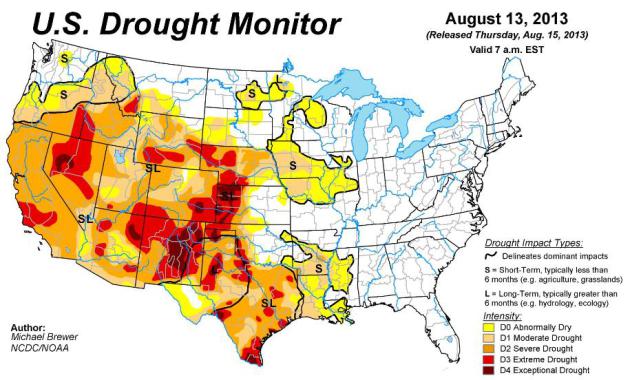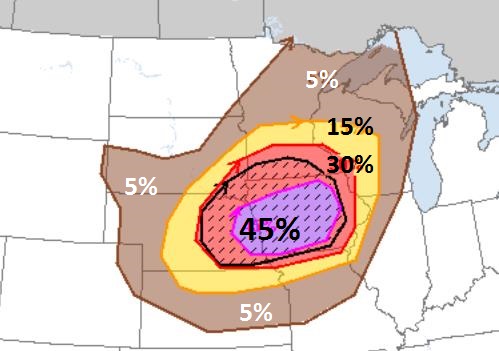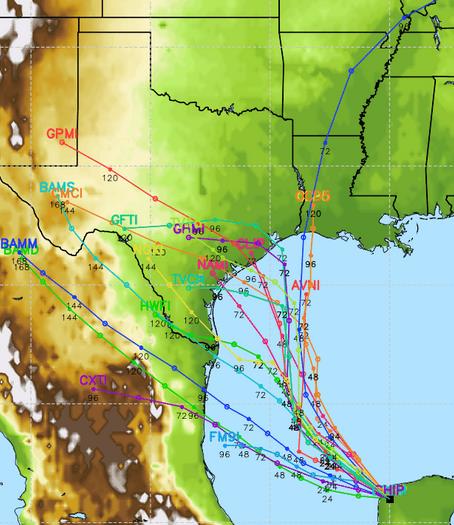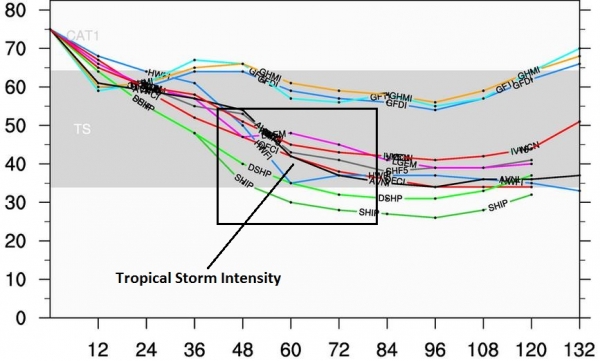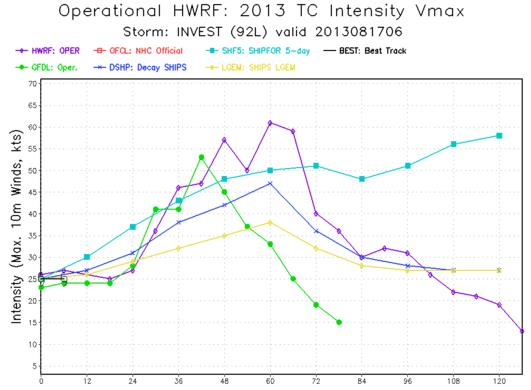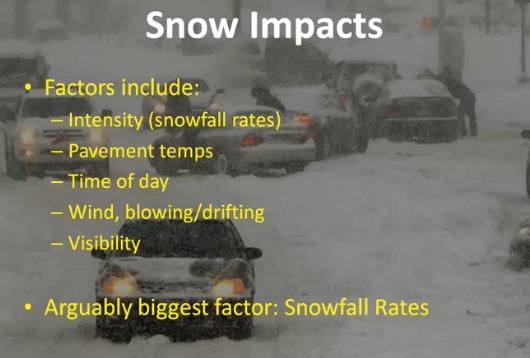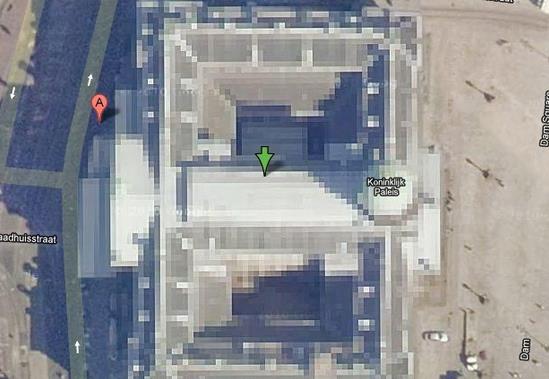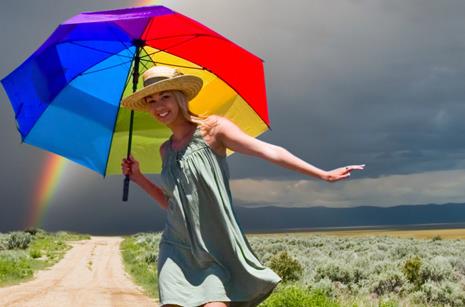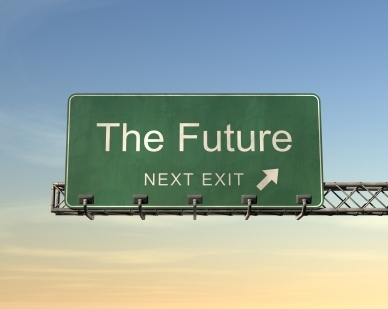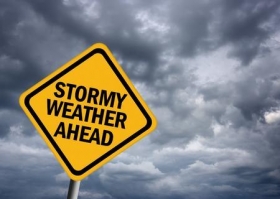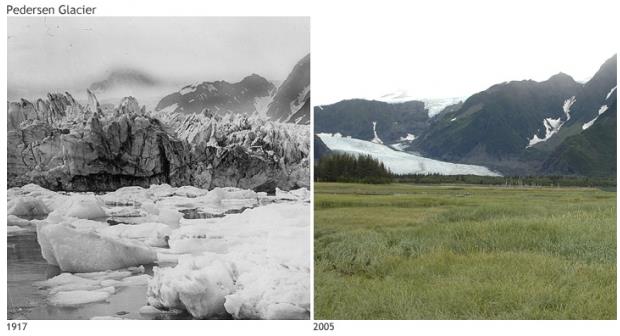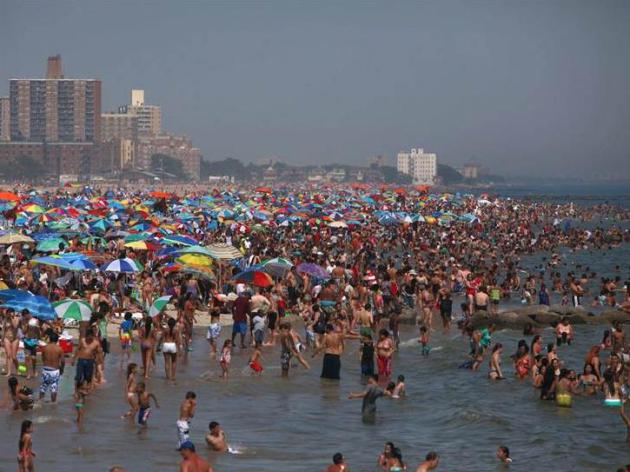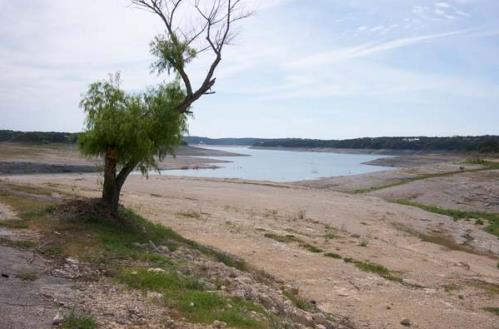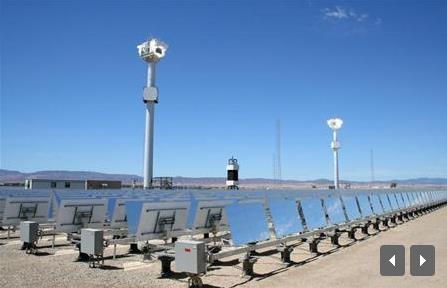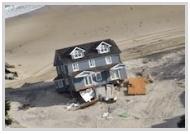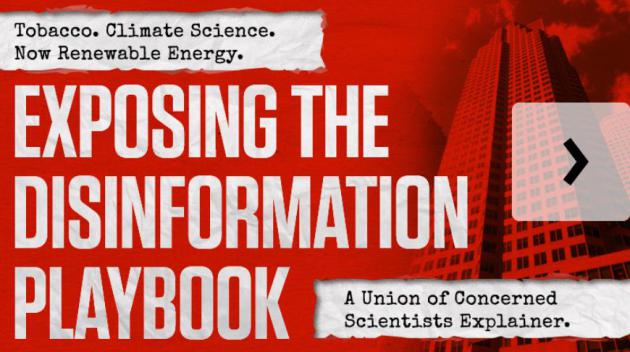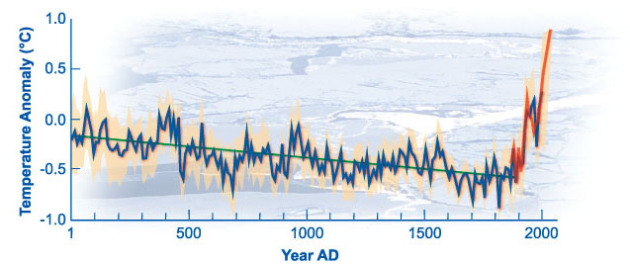Failure Inc.
Hi, my name is Paul, and I'm a failure.
Launching a company is an exercise in humility - because things never
work out the way you predict.
Anyone who thinks their business model won't
change is delusional. Experimentation is critical, in business and in
life. "Fail as fast as you can" one Silicon Valley entrepreneur said. As
one of my mentors taught me, "If you're not failing it means you're not
really trying."
I know, meteorologists fail for a living, the 87
percent accuracy rate for the tomorrow forecast hasn't improved in 30
years, in spite of better satellites, models & Doppler. The 3-7 day
forecast is considerably better & fewer Americans are dying from
severe weather, in spite of a spike in extreme events.
Dr. Mark Seeley reports International Falls just
went 28 consecutive days with cooler than normal temperatures. I hope
you enjoyed our 1 month cool front because Mother Nature is about to
turn up the thermostat; 90-95F highs possible by midweek. I expect more
90s from from the last week of August into early September.
Expect a beautiful weekend; a slight chance of thunder Monday & Thursday.
On the blog: updates on what may become "Fernand", limping toward Texas.
More July Than August.
Your favorite lake may warm up again (a little) in the coming days;
highs consistently in the 80s thru next weekend, a few 90s possible by
next Tuesday and Wednesday. Not much rain in the forecast; an isolated
T-shower Monday, a better chance of a few T-storms for Day 1 of the
Minnesota State Fair next Thursday.
Meteorological Ups And Downs. The warming trend
peaks the middle of next week; ECMWF guidance hinting at a high of 95F
next Wednesday, before another puff of Canadian air drops temperatures
and dew points (which fall from low 70s Thursday into the 40s on
Friday). Maybe two uncomfortably hot, sticky days then a fresher front
in time for next weekend. Graph:
WeatherSpark.
Gulf Coast Soakers. A stalled front may squeeze out
some 3-5" rains from near New Orleans and Mobile to Tallahasee, Florida
over the next 5 days. Much of America stays dry, a few spotty
instability T-storms over the Southwest, a cool rain and drizzle pushing
into the Mid Atlantic region by Sunday.
Cooler Than Normal Temperature Pattern Continues.
Wave goodbye to the cool & comfortable weather we've been enjoying
for nearly 4 weeks - a significant shift in the pattern is coming.
Here's a good recap of the "brisk" conditions from Mark Seeley in this
week's edition of
WeatherTalk: "
Over
the past three weeks cooler than normal temperatures have dominated
our region quite consistently. In fact International Falls, MN has
reported 28 consecutive days with cooler than normal temperature
readings. Some overnight lows have dipped to record setting values. On
August 10th International Falls tied their record low of 38 degrees F.
Then on Wednesday, August 14th several northern Minnesota communities
reported record low values, including Ely (36 F), Orr (35 F), Crane
Lake (34 F) Kabetogama (37 F), Grand Marais (32 F), Silver Bay (32 F)
Brimson (30 F tied 2004), and International Falls again (35 F tied
1997). On Thursday (August 15) some additional low temperature records
were set at Embarrass (32 F), Kabetogama (38 F), and Orr (35 F).
Further, on Friday morning there were a few more reports of lows in the
30s F including Crane Lake and Orr (39 F) and Embarrass (36 F)..."
Weather Vs. Climate: Keeping The Big (Global) Picture.
With cooler than average temperatures the last 3-4 weeks over the
northern tier of the USA it's tempting to dismiss climate change and
global warming, but this misses the distinction between weather and
climate. A Canadian breeze has been blowing from Minneapolis to Chicago,
D.C. and Boston since late July, but stepping back and looking at the
larger picture the trends are undeniable. Here is today's edition of
Climate Matters: "
Last
summer, much of the U.S. was baking in sweltering heat. This year, a
different story for the Eastern Half of the U.S. The dog days of summer
are missing in action. Wait until you see the comparison of 90 degree
days this year compared to last year and compared to average. What kind
of summer weather do you prefer? Do you like it hot, or are you happy
when it's cooler than average?"
Fall Outlook: Slightly Warmer - Slightly Wetter.
Here is NOAA CPC's extended outlook (guess-cast!) for the period
September into November, showing a slight bias toward milder and wetter
for portions of Minnesota; a better chance of a wet autumn from the
Plains into the Great Lakes. Place your bets.
U.S. Drought Monitor. There are pockets of
abnormally dry soil in Minnesota and northwest Wisconsin, even moderate
drought creeping back into Iowa and Nebraska - the worst drought
conditions over the western Plains into New Mexico and Nevada.
Percentage Of Corn Belt Experiencing Drought. At least report the
USDA reported 24% of the corn-growing region of the USA experiencing drought conditions as of August 13.
"Fernand" Heading Toward Texas? Here's an excerpt of an
Alerts Broadcaster Briefing that went out to our corporate customers Friday morning:
Nagging Storm Potential.
NOAA NHC continues to keep the risk of tropical storm formation at 50% -
same as on Thursday. Conditions are favorable for intensification into
Tropical Storm Fernand, especially if the storm stays in the western
Gulf of Mexico, where water temperatures are unusually warm and wind
shear is less. Tropical Storm Erin will, in all probability, recurve to
the northwest and north, posing little or no risk to the USA.
Temporarily Shredded.
Invest 92, the storm that will probably strengthen into "Fernand" by
late tomorrow, is centered over Mexico's Yucatan Peninsula. Since
tropical systems get their energy from warm ocean water the storm has
weakened, but intensification is likely as the center of the storm
passes over the Bay of Campeche and Gulf of Mexico.
Westward Nudge To Storm Tracks.
Latest guidance shows a fan of risk stretching from near Lake Charles,
Louisiana into Mexico, but the most likely point of landfall right now
is near Corpus Christi, Texas in 3-4 days, roughly a Monday-Tuesday
timeframe.
Timing. The
various models, including the official HWRF forecast from NHC (purple
above) suggests possible landfall within 96 hours, but I want to stress
that this is still preliminary - the timetable will almost certainly
change in the days ahead. This is the best available information, to
date.
Intensification Likely. Most of the models show Invest 92 becoming a tropical storm within 2 days, with weakening after landfall after 96 hours.
The Case For A Minimal Hurricane?
The (more) reliable HWRF model shows a brief surge in intensity before
landfall as "Fernand" passes over warm water (yesterday I showed you a
map with 85-90 F water in the northwestern Gulf of Mexico). We still
can't rule out the possibility of Fernand becoming a minimal, Category 1
hurricane before pushing ashore early next week.
Summary: models are
beginning to converge on a solution with higher reliability. My
confidence level has risen to a 3 out of 10 that coastal Texas will be
impacted by a moderate tropical storm or even a minimal Category 1
hurricane. Gulf Coast facilities and staff should remain in a heightened
state of alert and readiness, with the greatest focus on coastal Texas,
from Galveston to Corpus Christi to Brownsville. Wherever "Fernand"
comes ashore the risk of inland flooding will be significant, with a
potential for some 5-15" rains. We'll keep you posted and do our very
best to set your expectations in the days ahead.
Why U.S. Power Companies Don't Want You Putting A Solar Panel On Your Roof.
Quartz.com (great site) has the story; here's the intro: "
The short answer: It will destroy their business model forever. In
the US, electrical utilities are in a charged battle—complete with
negative political ads—against solar panel distributors over rules that
both sides say could put them out of business. Consumers are caught in
the middle. A relatively new swathe of
companies like Verengo, Sunrun, Sungevity and SolarCity have spent
millions leasing solar equipment to homeowners and businesses. The cost
of the lease is offset by savings on their electrical bill. Those
savings come not just because of free power from the sun, but also
through tax credits—and, most importantly today, because states allow
those who have solar panels to sell any excess power back to the grid.
The more than 200,000 “distributed solar generators” in the US produce
less than 1% of the country’s electricity. But that’s growing thanks
to the falling cost of photovoltaics and financing from investors like Google.
And this worries the big power companies, particularly country’s two
largest, Pacific Gas & Electric and Southern California Edison..."
Photo credit above: "A sunshine warrior." Reuters/Lucy Nicholson
Is The National Weather Service Issuing Too Many Thunderstorm Warnings? In
fairness, I think this problem, or perceived problem, varies wildly
from one NWS office to the next. I haven't heard this complaint (much)
here in Minnesota, but in other parts of the USA the perception is
different, from local media and consumers. Here's a clip from a post by
meteorologist Jason Samenow at The Washington Post's
Capital Weather Gang: "...
A
concern is that the NWS may be lulling the public towards warning
fatigue by issuing warnings for these kinds of storms – which are common
in the area during summer. If warnings are issued repeatedly for
storms that are merely heavy, but not severe, it’s reasonable to worry
the public may start ignoring these warnings. Then, they may not
appreciate the relatively rare circumstance when storms are actually
producing widespread hazardous conditions and take the needed action..."
Photo credit above: "
A storm approaches Nationals Park August 13." (Noe Todorovich
via Flickr)
Proposed Change To Winter Storm Warnings And Advisories.
Everyone (including me) fixates on "how many inches", when snowfall
rates and time of day can be huge factors in determining how bad travel
conditions will be. Some changes and modifications are coming. Here's a
YouTube clip from the Central Office of the National Weather Service in Chicago: "
Here
is a short description of the proposed changes the NWS Chicago is
considering making to winter storm warning and winter weather advisory
criteria this winter."
The Hybrid Future Of Journalism. Here's a clip from an interesting Op-Ed by Arianna Huffington at
The Huffington Post: "...
This
combining of the best of traditional media with the boundless
potential of digital media represents an amazing opportunity. First,
it's an opportunity to further move the conversation away from the
future of newspapers to the future of journalism -- in whatever form
it's delivered. After all, despite all the dire news about the state
of the newspaper industry, we are in something of a golden age of
journalism for news consumers. There's no shortage of great journalism
being done, and there's no shortage of people hungering for it. And
there are many different business models being tried to connect the
former with the latter -- and Jeff Bezos will no doubt come up with
another. The future will definitely be a hybrid one, combining the best
practices of traditional journalism -- fairness, accuracy,
storytelling, deep investigations -- with the best tools available to
the digital world -- speed, transparency, and, above all, engagement..." (Photo:
University of Windsor).
How To Choose Your Best Place To Retire. I thought this article from PBS's
Next Avenue
brought up some good points, things I hadn't considered. Yes,
retirement almost rolls off the tongue these days. Here's a clip: "...
The
problem with these lists is that they’re typically based on broad
geographic statistics, such as home prices, cost of living, state and
local taxes, the availability of medical care, public transportation,
and weather and crime rates. While the data might measure factors that
are important to consider when choosing a place to retire, other
criteria that can’t be quantified may well be more important to you. The
best way to decide where you should retire is to find the place that
best meets your needs and circumstances, however you define them. To do
that, ask yourself the following questions:
- Do you want to be near friends and family?
- Will you be taking care of aging parents? If yes, will you need to be close by?
- Do you have hobbies or interests that play into where you’d want to live?
Photo credit: Thinkstock.
10 Places You're Not Allowed To See On Google Maps. I found this vaguely interesting, courtesy of
mashable.com: "
Want an up close view of the Eiffel Tower but can't make it to Paris anytime soon? Google Maps
is optimal for virtual sightseeing. But not every landmark is visible
on the site — some images are blurred and distorted by countries for
security reasons. This means that if you want to see towns or streets in
North Korea, you can't. Also blurred is the Royal Palace in the
Netherlands and even a power plant on Cornell University's campus in
Ithaca, New York. "The satellite and aerial imagery in Google Earth and
Google Maps is sourced from a wide range of both commercial and public
sources," Google spokesperson Deanna Yick tells Mashable. "These
third-party providers are required to follow the law of the countries
in which they operate, so some of them may blur images and then supply
us with those images..."
Image credit above: "
The Royal Palace of Amsterdam in the
Netherlands -- called Koninklijk Paleis Amsterdam -- joins a long list
of places blurred on Google Maps related to the Dutch royal family,
including the Royal Stables and another residence called Huis ten Bosch."
How Your Birth Order Can Influence Who You Are. Here's an excerpt of a fascinating story at
io9.com: "
As
many parents can attest, siblings tend to be more different than
alike. Some of this may be the result of our birth order, and how we’re
subsequently raised. What’s more, birth order may influence our health
and sexuality too. Here’s what you need to know about how your birth
rank affects your life. Birth order is an incredibly difficult area to
study, and as such, is considered highly controversial. There are so
many factors to consider outside of a person’s familial rank by age,
including the spacing in years between children, the total number of
children in a family, socioeconomic status, the sex of siblings, and
environmental circumstances during upbringing. It’s not easy to isolate
traits that are dependent on birth order..."
Where To Find Free Wi-Fi At U.S. And International Airports. Here's some useful information for business and leisure travelers courtesy of
Mashable: "
For frequent fliers, nothing is more blissful than an airport with free Wi-Fi. But not every stopover location is so generous. Airfarewatchdog
assembled two handy charts that detail everything you need to know
about wireless connections at major airports in the United States and
worldwide, from airports with free Wi-Fi to those with the most
expensive Wi-Fi and usage limitations..."
Climate Stories...
As Northeast Asia Bakes, Climate Scientists Predict More Extreme Heat Waves On The Horizon. We're seeing more of these sudden (and prolonged) heat spikes, 2 to 4 standard deviation extremes, as explained by
Time Magazine; here's a clip: "
Northeast Asia is on fire. Yesterday temperatures in Shanghai hit an all-time high
of 105.4ºF (40.8ºC), the hottest day in the coastal megacity since
Chinese officials began keeping records some 140 years ago — during the
Qing dynasty. On Aug. 12 the heat reached 105.8ºF (41ºC) in the southern Japanese city of Shimanto,
the hottest temperature ever recorded in the country. Hundreds of
people throughout South Korea have been hospitalized because of
heatstroke, even as the government was forced to cut off
air-conditioning in public buildings because of fears of a power shortage. As heat waves go, it’s a tsunami, similar to the brutally hot weather that singed Europe 10 years ago, which contributed to the deaths of over 30,000 people. It’s also a glimpse of a blazingly hot future..."
Photo credit above: "
Men take a rest by an exhaust outlet
of a building during a hot summer day in Beijing, China Wednesday, Aug.
14, 2013. Heat wave hit several cities, mostly in the south and east of
China as temperature went up above 40 degrees C (104 F) in some parts." (AP Photo/Andy Wong)
Climate Change Is Scary, But I'm Not Scared. No, the situation is far from hopeless, as the author of this Op-Ed at
Living Green Magazine points out - here's an excerpt: "...
So,
why am I not scared? Why did I decide to have a baby in the face of
this knowledge? Because there are hopeful trends. Technology can be
implemented very quickly, and views can change equally quickly. The
impossible can quickly become inevitable. A recent poll showed that
young people think that climate change deniers are “ignorant” “out of
touch” and “crazy”[8]. They also don’t care much for cars, and prefer modes of transportation that allow them to text at the same time[9].
They think electric cars and solar panels are cool. And it’s not just
our kids’ attitudes that give me hope. The technological solutions are
here. The price of solar panels has come down 80% since 2008[10].
Imagine if a shirt at the Gap was marked as 75% off—a few more shirts
would sell, and indeed, as you’d expect, solar panels are flying off
the racks..."
Climate Policy's Twin Challenges. Here's a portion of a story posted at
The Los Angeles Times: "
Climate
change presents two distinct problems. The first is linear: A little
more warming causes a little more damage. The second is nonlinear: A
little more warming pushes some part of the climate system past a
tipping point and the damage becomes catastrophic. We need smart climate
policies that address both problems, so we can slow incremental damage
while also taking out an insurance policy against the growing risk of
catastrophic damage. The Arctic is a prime example of a potential
tipping point. It is already warming at twice the global rate, with
Arctic sea ice disappearing faster than previously predicted. Some
scientists calculate that it could disappear for all practical purposes
later this decade..."
Solar Panels Return To White House.
The Hill has an update; here's the introduction: "
The White House is making good on a late 2010 pledge
to put up solar panels. “The White House has begun installing
American-made solar panels on the first family’s residence as a part of
an energy retrofit that will improve the overall energy efficiency of
the building,” a White House official said. The installation drew
cheers from an environmental group that in 2010 called for panels to
return to the White House after the Reagan administration removed a
Carter-era solar panel installation..."
File photo above: "
Pres. Jimmy Carter speaks against a
backdrop of solar panels at the White House, Wednesday, June 21, 1979,
Washington, D.C. The panels catch the suns rays and warm water used in
parts of the Executive mansion." (AP Photo/Harvey Georges)
Would Things Be Different If The Public Had Perfect Information On Climate Science And Solutions? Here's a portion of a Joe Romm post at
Think Progress: "
Last week, I wrote about the important Dunlap-McRight paper that found organized climate change denial “Played a Crucial Role in Blocking Domestic Legislation.” Although this is a pretty obvious conclusion to objective observers, the false-equivalence bunch, led by blogger Andy Revkin,
couldn’t bring themselves to report on it without giving the
professional disinformers equal time. John Rennie, the former editor in
chief of Scientific American, slammed Revkin’s piece in a must-read
post, “Revkin’s False Equivalence on Climate Message Machines.”
Rennie was particularly critical of Revkin’s equating the climate
denial machine with a laughable “climate alarmism machine” (whipped up
by an Australian disinformer), which equates those who spread outright
anti-scientific disinformation (often funded by fossil-fuel interests)
with the serious work of climate scientists and governments (and others)
who make use of that genuine, scientific work..."
Brave New World: Americans Are Learning To Live With Climate Change. Because when you get right down to it - we won't have much choice. The forecast calls for adaptation. Here's an excerpt from
Grist: "
The
Great American Road Trip — it’s a rite of passage, a national pastime,
and increasingly, a tool for spreading the word about looming climate
catastrophe. Each summer, a motley parade of veggie buses, vintage motorcycles, and bicycles
circulates around the country, its participants out to preach the
gospel of green living, and perhaps learn a thing or two in the process.
Two of these eco-minded road trippers, Kirsten Howard and Allie
Goldstein, recently dropped by the Grist offices in Seattle to tell us
about their adventures aboard a 2000 Toyota Sienna minivan. The duo, who
recently graduated from the University of Michigan’s School of Natural
Resources and Environment, called their adventure the Great American
Adaptation Road Trip..."
How "Skeptics" View Arctic Sea Ice Decline. Here's an excerpt from
Skeptical Science: "
September Arctic sea ice extent data
since 1980 from the National Snow and Ice Data Center (blue
diamonds). "Recovery" years, meaning years when the sea ice extent is
greater than the previous year, are highlighted in red to mock the
repeated cynical claims of climate change "skeptics" that global
warming has somehow stopped. Many factors affect the annual summer
decrease in Arctic sea ice extent, and it is illogical at best to claim
any "trend" by cherry-picking
only brief periods of data. The obvious true long-term trend in
Arctic sea ice extent (red second-order polynomial curve fit) is that
it is declining at an accelerating rate..."
2012 State Of The Climate: Glaciers. Here's the introduction to a story at NOAA's
Climate.gov focused on glacier retreat around the world: "
Around
the globe, some 370 million people live in basins where rivers derive
at least 10 percent of their seasonal discharge from glacier melt.
Glacier melt provides drinking water for human populations, and
irrigation water for crops. The damming of glacial melt water even
generates hydroelectric power. The retreat of the majority of mountain
glaciers worldwide is one of the clearest signs of long-term climate
change....Between
1980 and 2011, glaciers around the world lost the water equivalent of
15.7 meters. That would be like slicing a roughly 17-meter-thick slab
off the top of the average glacier and repeating that exercise
worldwide."
Photo credit above: "Pedersen
Glacier, at Aialik Bay in Alaska’s Kenai Mountains, in 1917 (left)
and 2005 (right). In the early 20th century, the glacier met the water
and calved icebergs into a marginal lake near the bay. By 2005, the
glacier had retreated, leaving behind sediment allowed the lake to be
transformed into a small grassland."
Photos courtesy of Louis H. Pedersen (1917) and Bruce F. Molina
(2005), obtained from the Glacier Photograph Collection, Boulder,
Colorado USA: National Snow and Ice Data Center/World Data Center for
Glaciology. Large images: 1917 | 2005.
Extreme Heatwaves To Quadruple By 2040, Study Says. Here's more from
NBC News: "
The
type of heat waves that wilt crops, torch forests — and kill people —
are expected to become more frequent and severe over the next 30
years regardless of whether humans curb emissions of the greenhouse
gas carbon dioxide, according to a new study. These are heat waves akin
to those that baked many regions of the U.S. in 2012 and devastated crops in Russia in 2010.
Such bouts of extreme heat are so-called "three-sigma events,"
meaning they are three times warmer than the normal climate of a
specific region for weeks in a row. Since the 1950s, the frequency of
these events has "strongly increased and right now they cover about 5
percent of the global land area," Dim Coumou, a climate scientist with the Potsdam Institute for Climate Impact Research in Germany, told NBC News..." (Photo: Reuters).
Can Extreme Weather Make Climate Change Worse? Normally
the argument is the other way around - a warmer atmosphere creates
conditions more favorable for extreme weather events, but what if the
opposite is true as well? Here's a portion of a story at
Climate Central: "
Devastating
drought in the Southwest, unprecedented wildfire activity, scorching
heat waves and other extreme weather are often cited as signs of a
changing climate. But what if those extreme weather events themselves
cause more extreme weather events, fueling climate change? That’s one of
the possibilities raised by a study
released Wednesday that was conducted by a team of scientists at the
Max Planck Institute for Biogeochemistry in Jena, Germany. The
researchers have shown that extreme weather events may reduce an
ecosystem’s capability to absorb carbon and create a damaging cycle in
which extreme weather fuels climate change by preventing forests from
absorbing carbon, allowing more of it to remain in the atmosphere..."
Photo credit above: "
Low water levels in Lake Medina northwest of San Antonio, Texas." Credit: Mike Fisher/flickr
Insight: California Aims To "Bottle Sunlight" In Energy Storage Push.
This is one of the big, remaining missing links - storing electricity
generated by renewables (or any other source) until its needed.
Reuters reports; here's a clip: "
California,
whose green ambitions helped the solar and wind industries take root,
is taking an essential next step by proposing a sharp rise in energy
storage to better integrate renewable power with the rest of the grid. Power from sun and wind fluctuates dramatically, so capturing it for later use makes the supply more predictable.
"We can't just rely on sunlight," Governor Jerry Brown told the
Intersolar conference in San Francisco last month. "We've got to bottle
the sunlight..."
Scientists Have A Moral Obligation To Take Action On Climate Change. Here's an excerpt from a story at The Guardian: "...
As Bill Maher put it with
comic exaggeration, "On this side of the debate: every scientist in
the world. On the other: Mr Potato-Head". There is no debate here;
it's just scientists and non-scientists, and since the topic is
science, the non-scientists don't get a vote. The majority of climate
scientists are probably right to follow their current strategy, which
is keep calm and carry on. They are expanding our knowledge about the
climate, doing what they are best at and which the rest of us are
unable to do. However we are in a global crisis, and I believe that the
scientific fraternity has an ethical obligation to take action. We
need some scientists to show social leadership, not just scientific
leadership. Edwards is being too strident, calling on all scientists
to refrain from public advocacy and leadership. I think that is
unreasonable to expect and never likely to happen..."
Exposing The (Climate) Disinformation Playbook. Here's a slideshow and explanation from the
Union of Concerned Scientists: "
Powerful
coal, oil, and gas interests are trying to confuse us all about
global warming and renewable energy. Not with facts or reasoned
argument — but with disinformation. In this interactive slideshow, UCS
reveals the tactics used by the fossil fuel industry to spread
disinformation and delay action on climate change — the very same
tactics used by Big Tobacco for years to mislead the public about the
dangers of smoking. Don't stand for it. Join our fight against disinformation today!"
George Shultz: A Republican Who Accepts The Reality Of Global Warming.
No, you don't have to be a liberal or progressive to look at the
data, the trends and the science and reach an informed decision.
Here's a portion of a post at
Slate: "...
Which
brings me to George Shultz. Among other political appointments, he
was Ronald Reagan’s secretary of state. While I might
disagree—vehemently—with much of Reagan’s policies, there are plenty of
places I imagine Shultz and I would agree. Of late I might disagree
with him strongly on many things as well—he is, after all, a Republican
strategist, as well as being an adviser to the George W. Bush
campaign in 2000.But he sat down with Scientific American magazine and gave a thoughtful and excellent interview about global warming.
The takeaway: He accepts the reality of warming and says in no
uncertain terms we need to be doing something about it. One of the more
clear statements he makes, among many, is this simple pronouncement:
"You know, a new ocean is being created for the first time since the
Ice Age [in the Arctic with the meltdown of sea ice]. How could that
happen? It's getting warmer..."
Photo credit above: "
George Shultz and President Reagan in 1986." Photo by White House staff, from the Ronald Reagan Presidential Library, National Archives and Records Administration/
wikimedia.


